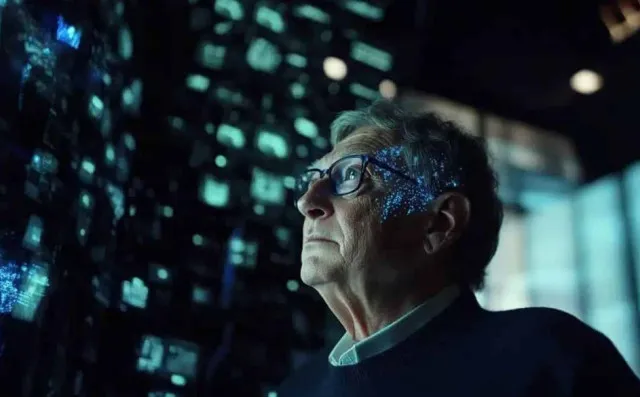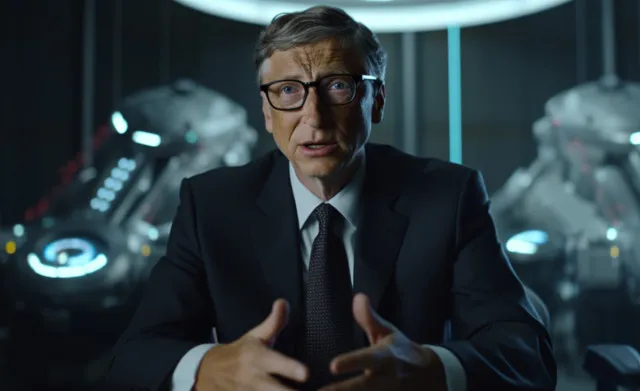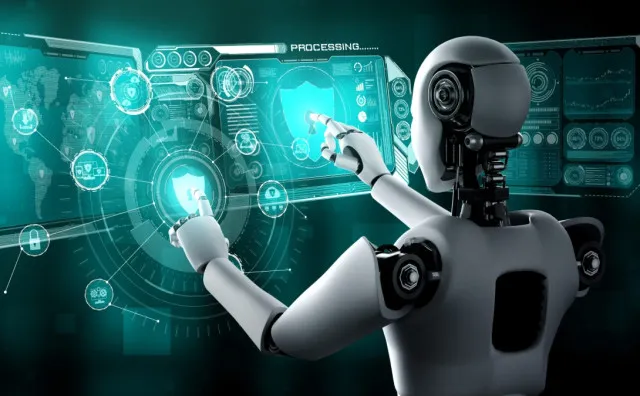Bill Gates predicts that AI will replace many jobs, highlighting only three professions he believes will still thrive in the future.
As AI grows, many jobs face automation. Bill Gates identifies the most at-risk roles and three he believes will survive.
As artificial intelligence (AI) continues to advance, many people wonder about its impact on jobs.
Bill Gates, the co-founder of Microsoft, recently shared his thoughts on which jobs are at risk of being replaced by AI.

He believes that while some roles will survive, many positions could be automated in the near future.
This article explores the jobs most likely to be taken over by AI based on Gates’ insights.
Understanding AI’s Growing Influence on Work
AI technology is becoming more common in our everyday lives.
Many people use tools like ChatGPT to assist them at work. These tools can help with scheduling, brainstorming, and other tasks.
However, there is a difference between using AI to assist and allowing it to take over jobs entirely.
Gates believes that some jobs are safer from automation than others.

Bill Gates reveals jobs will be taken over by AI after listing out only three he believes will survive
Gates highlighted several job categories that are likely to be replaced by AI.
Some of the most vulnerable positions include those in data entry, customer service, manufacturing, graphic design, translation, and photo editing.
Let’s take a closer look at each of these areas.
Data entry positions
Data entry jobs are among the most at risk. AI can process and organize large amounts of data quickly and accurately.
A single mistake in a data entry can lead to significant problems, making AI an attractive option for businesses.
While this could eliminate some jobs, it might also help workers by taking over repetitive tasks.
Customer service roles
Customer service is another sector where AI is making significant inroads.
Many businesses already use AI systems to handle customer inquiries. If you’ve called a helpline, you may have spoken to an AI rather than a human.
AI can respond quickly and manage many requests simultaneously.
However, this can reduce the personal touch that human representatives provide.

Manufacturing and assembly lines
In manufacturing, AI-driven robots are already performing many tasks on assembly lines.
These machines can work faster than humans and do not need breaks.This can lead to increased productivity for companies.
As AI technology continues to improve, more manufacturing jobs may be at risk of being automated.
Graphic design tasks
While graphic design requires creativity, AI can still handle basic design tasks. For example, AI can create social media posts or simple website layouts.
Although it may lack the originality of human designers, using AI for these tasks can be cost-effective for businesses.
This trend could lead to fewer opportunities for human graphic designers.
Translation services
Translation jobs are also vulnerable to automation.
AI can translate text quickly and accurately, making it an appealing alternative to human translators.
With a smartphone, anyone can access translation apps, making professional translators less necessary.
This shift may impact many people who rely on translation services for their careers.

Photo editing jobs
Photo editing is another area where AI is making strides.
While AI may not have the same artistic vision as human editors, it can perform basic editing tasks. This includes adjusting lighting or cropping images.
As AI becomes more efficient in this area, it could replace some photo editing jobs.
Embracing the benefits of AI
While it is concerning that many jobs are at risk of being replaced by AI, there are also advantages to this technology.
AI can take over repetitive and mundane tasks, allowing human workers to focus on more complex and creative projects.
By integrating AI into the workplace, businesses can increase efficiency and productivity.
Bill Gates believes that certain jobs will remain secure even as AI continues to develop.
Roles in coding, the energy sector, and biology are less likely to be fully automated.
These positions require critical thinking and creativity, making them more challenging for AI to manage.